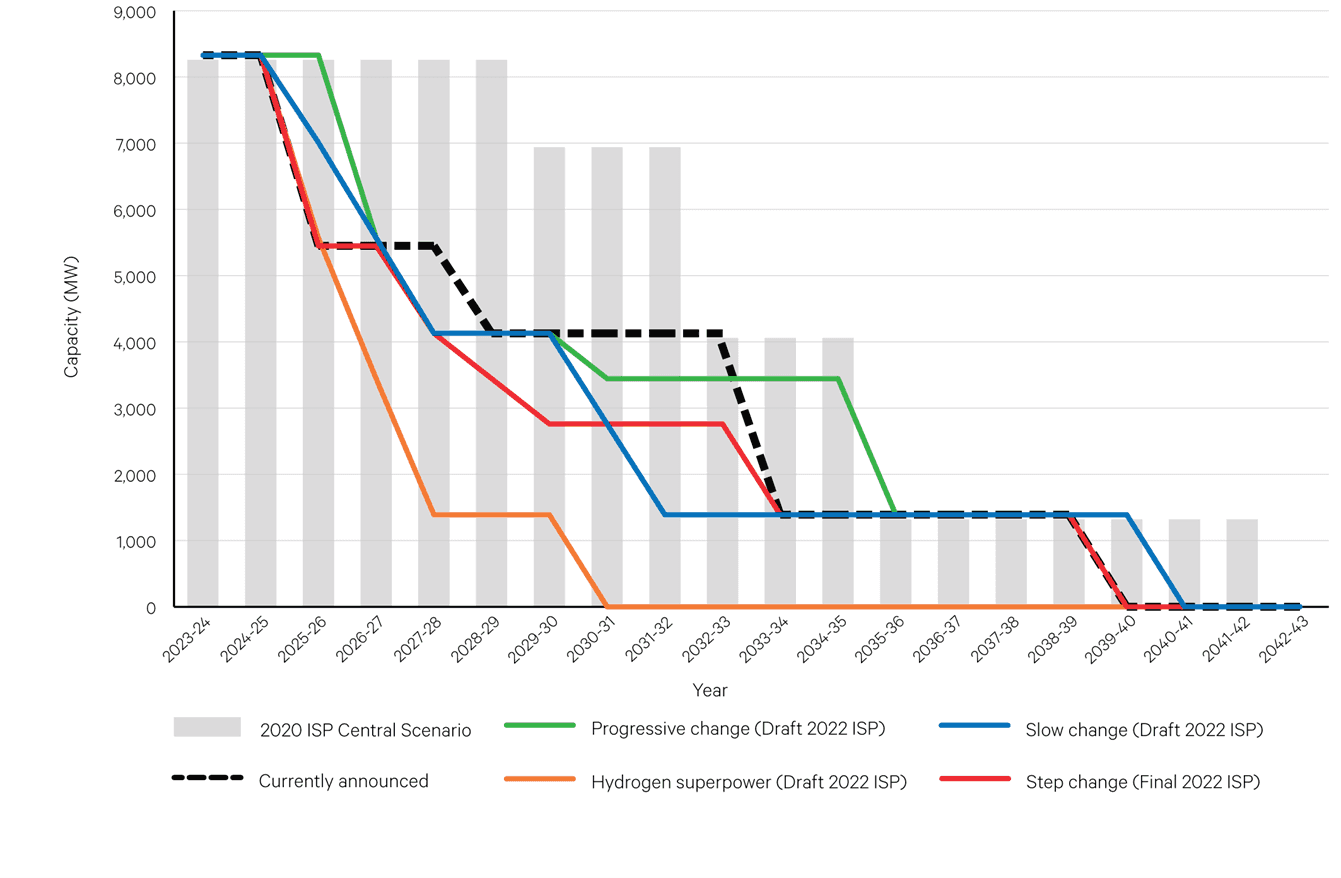As the AEMO’s 2022 Integrated System Plan (ISP) states, the investment in new transmission required to transition Australia to a renewable energy-based power system needs to begin ‘as urgently as possible’.
17 August 2022
As the AEMO’s 2022 Integrated System Plan (ISP) states, the investment in new transmission required to transition Australia to a renewable energy-based power system needs to begin ‘as urgently as possible’.
At Transgrid, we believe the delivery dates set for critical transmission projects could be even more ambitious than the ISP envisages. In fact, our forecasts suggest we need to dramatically accelerate the timeline for when firmed renewables can deliver affordable, low-cost reliable energy to homes and businesses.
The energy transition is accelerating
Increasing volumes of evidence indicate that transition is happening faster than planned. In the past year, the expected retirement dates for several major coal power stations across the NEM have been brought forward.
In NSW, the staged retirement of the Liddell Power Station has already started, with all units due to be closed in April 2023. The Eraring Power Station has announced it will close in 2025, seven years earlier than previously expected. And the retirement date for the Bayswater Power Station has also been brought forward to ‘no later than’ 2033. This is two years earlier than previously announced, with AGL Energy management indicating the closure could be brought forward again to 2030.

This graph shows how quickly and dramatically expectations about the longevity of coal generators have shifted. Changes that had previously been expected to occur later and more gradually are likely to happen sooner and more suddenly.
But the energy system is not prepared for an accelerated coal retirement – and the consequences of not bringing on renewable generation quickly enough could be dire.
The June 2022 energy market crisis highlighted the high costs and system risks of being insufficiently prepared for generation outages and supply chain interruptions. These risks will continue until we have a strong, flexible electricity network capable of safely connecting high volumes of renewable energy.
The 2022 ISP assumptions are conservative
While acknowledging the excellent work underpinning AEMO’s ISP, we are mindful that it is generally a just in time plan.
Although it acknowledges that coal-fired generation is withdrawing faster than announced, its assumption that 60% of capacity will be withdrawn by 2030 may still prove to be conservative. Technical, commercial and social pressures could see these generators retire even more rapidly than currently forecast, especially as competition from renewable generation intensifies.
This is why we must accelerate the development of large transmission infrastructure projects to ensure sufficient supply to meet demand at all times – well before large coal generators retire.
Connecting more local renewable and storage capacity to the network as soon as possible will build resilience and flexibility to prepare the power system for potential disruptions – and cushion the impacts so they don’t escalate into serious system stressors.
We need to bring forward transmission delivery schedules
To this end, we believe Transgrid’s next ISP projects could and should be completed faster and cheaper.
For example, we are investigating opportunities to integrate Humelink, Energy Connect and VNI West into a single simultaneous program. This would not only deliver the portfolio earlier – by 2028, but also save significant amount in program costs, translating into savings on the average residential customer bill.
Our proposed combined program would:
- Provide certainty for system planners and the developers of renewable electricity and storage
- Facilitate investment at scale in local production of materials and assembly
- Allow materials to be purchased earlier and at a lower cost
- Offer significant scale enabling limited construction resources, to be secured against consistent demand
- Increase the confidence and retention of contractors by providing consistent work
These projects could be fast tracked with support from a subordinated loan from the Commonwealth’s Re-wiring the Nation fund, which would ensure early works needed in a tightening market could commence without delay.
The success of this type of approach depends on cross-sector cooperation – on all parties being flexible and working together to address the investment challenges.
It will also require government and regulators to move quickly to make supportive legislative changes, including shortening approval lead times. We must have energy regulation that supports investment in the grid to enable a safe, secure, reliable transition to renewables and deliver lower prices for customers.
Learn more at Transgrid's Transmission Annual Planning Report 2022
